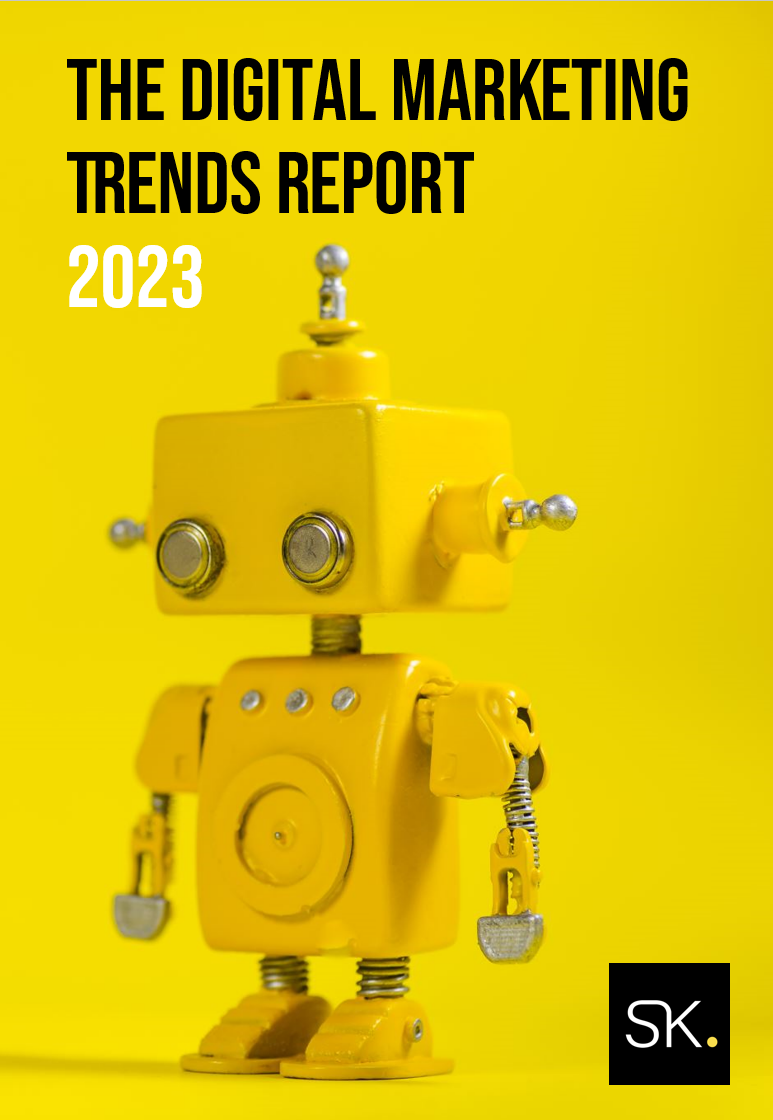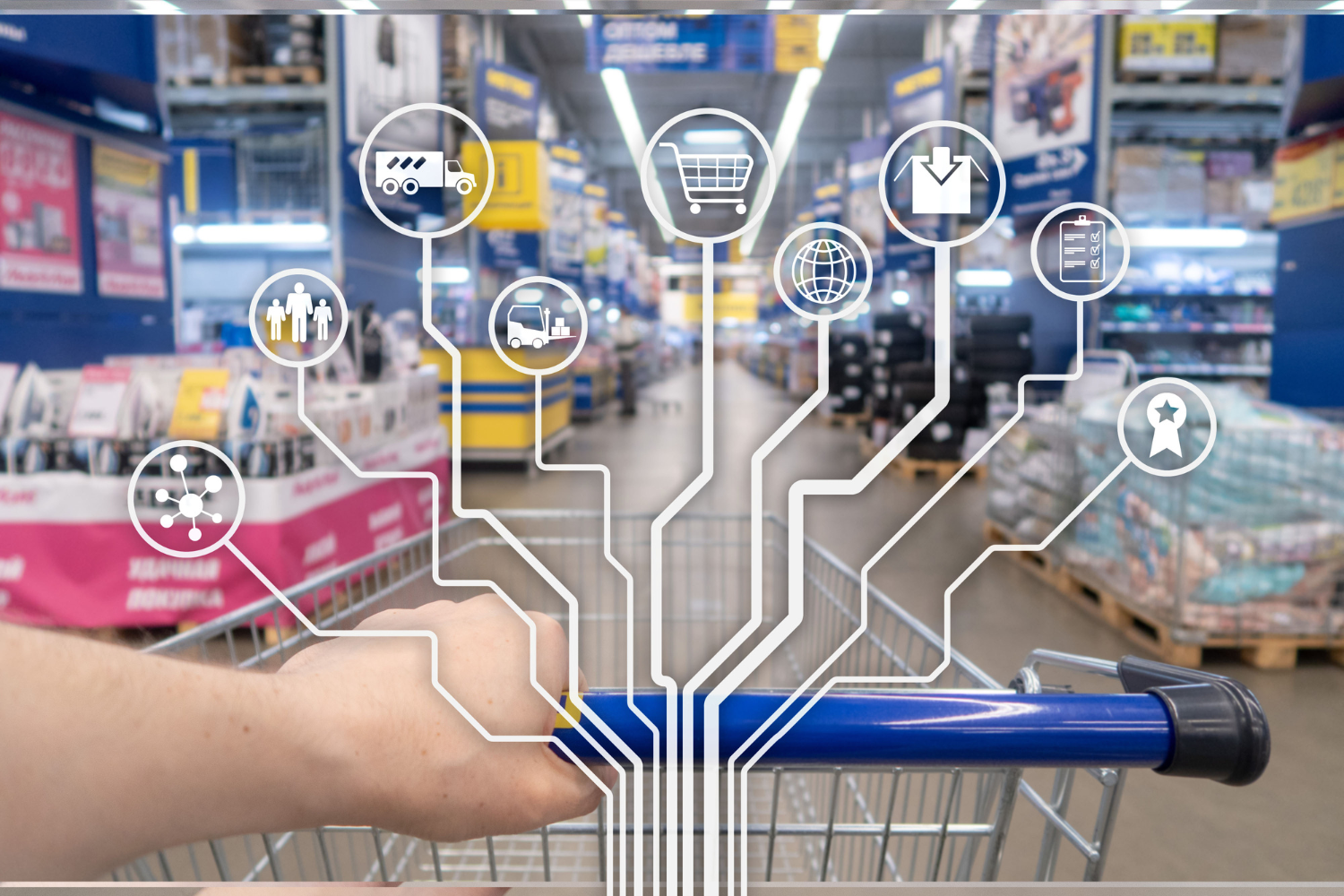The digital marketing landscape is constantly evolving, and one of the most exciting advancements is the rise of AI-powered content creation. AI tools can generate everything from blog posts and social media captions to product descriptions and marketing copy. However, with this exciting new technology comes a complex set of ethical considerations.
The tools and technologies we’ve engineered to understand and harness data are now transforming into creative muses, generating words, ideas, and stories that would have taken human minds hours—or even days—to produce. This shift leaves us at a crossroad, as we consider the question: Is AI content creation a friend or a foe? And more importantly, what are the ethical implications we need to consider in this brave new world of machine-generated content? In this article we will explore the potential of AI while delving into the ethical concerns that need to be addressed to ensure responsible use.
The Potential of AI for Content Creation (The Friend)
24/7 Content Generation Capabilities
There’s no denying the prowess of AI in streamlining the content creation process. From curating articles based on audience interests to optimizing headlines for click-through rates, AI is efficient—AI doesn’t tire, and it certainly doesn’t need sleep or time off. The promise of an always-on content creation engine has attracted content marketers looking to enhance their online presence and engagement.
Increased Efficiency and Productivity
AI can automate repetitive tasks like keyword research and content generation, freeing up valuable time for human creators to focus on strategy and higher-level creative endeavors. This not only increases efficiency but also productivity, allowing for more content to be produced in a shorter amount of time.
Ability to Personalize Content for Different Audiences
What AI brings to the table is the power to tailor content with a precision that human marketers can only dream of. With machine learning algorithms that analyze user behavior and data at scale, AI can produce personalized content that resonates on an individual level. This isn’t just about sprinkling a name in a newsletter. This is a fully crafted article, perfectly pitched to suit the needs and tastes of the recipient. This results in more relevant and engaging content that resonates better with target demographics.
Potential for Generating New and Creative Ideas
While not a replacement for human creativity altogether, AI can be a powerful tool for brainstorming and generating new ideas for content topics and formats. By sifting through vast amounts of historical data and identifying patterns of success, AI tools can suggest new topics and innovative angles that might spark the next great campaign or product launch. Creativity nurtured by data—this is the not-so-secret formula many advertisers are scrambling to utilize.
These benefits point to a future where AI can significantly enhance the content creation process, allowing brands to reach wider audiences and achieve better results.
The Ethical Concerns of AI Content Generation (The Foe)
However, alongside the potential, there are significant ethical considerations to be addressed. The rise of AI in content creation is not without its share of ethical conundrums. More speed and scale sometimes come at a cost. Here’s a closer look at some key concerns:
Accuracy and Bias
One of the most severe ethical challenges is the issue of bias. A 2023 study by Pew Research Center: found that 62% of Americans are concerned about the potential for AI to generate biased content. AI models are only as good as the data they’re fed. If that data is skewed or reflects societal prejudices, the AI’s creations will as well, which can have negative consequences, especially when dealing with sensitive topics like race, gender, or religion. We’ve seen instances where AI-generated content has perpetuated stereotypes and misrepresentations, propagating a version of the truth that’s tinted by the errors of our past data handling.
Case in Point:
Think back to the scandal where a famous tech company’s AI image recognition model labeled people of color as gorillas. That same potential for mislabeling exists in textual content, with AI systems sometimes making insensitive connections or unfortunate assumptions, unintentionally generating content that does harm, not service.
Transparency and Accountability
When AI-generated content is used, it’s crucial to be transparent about it. Imagine reading a news article only to discover later it was written by a machine. According to a Hootsuite: survey, only 38% of consumers are comfortable with AI-generated content unless they are clearly informed about its origin. Consumers have a right to know if the content they are consuming comes from a human or an algorithm. Additionally, there needs to be a clear understanding of who is accountable for any errors or biases present in the AI-generated output.
Intellectual Property and Copyright
As AI continues to evolve, questions arise regarding intellectual property rights and copyright ownership of AI-generated content. There’s also a fundamental lack of authorship when we talk about AI-generated content. Who do we attribute a piece of writing to when it’s the cumulative output of a thousand data points and a million lines of code? The question of who owns the words—and therefore, who bears the accountability for them—is a conundrum the industry is still grappling with.
The Originality Paradox:
Can AI truly be original when it draws from existing, human-authored content? And if an AI composes a piece that’s remarkably similar to another out there, who’s to say it was independently created?
Privacy Concerns
Content is at its most powerful when it’s personal. But there’s a fine line between personalized and invasive. AI models trained on large datasets may inadvertently reveal sensitive or personal information about individuals. For example, an AI trained on social media data might generate content that unintentionally leaks private details about users. AI that learns individual preferences and crafting content engineered to exploit—or even manipulate—those inclinations raises red flags. We tread into the realm of ethical boundaries and forced consent when AI wanders into the private spaces of our online lives. Protecting user privacy and ensuring that AI-generated content doesn’t violate privacy laws is essential
A House of Cards:
Imagine receiving an article perfectly aligned with your interests, only to learn it was designed to bait a particular action or response, and you were never really privy to the strings being pulled. This illusion of control can shatter trust and impede the genuine, humanistic experience content aims to deliver.
Job Displacement
The widespread adoption of AI for content generation could lead to job displacement in certain industries, particularly those that rely heavily on human content creators. Job displacement is a very is a concern for many. While proponents argue that AI frees up humans to focus on higher-level tasks, while AI can automate some tasks, human expertise will still be needed for strategy, editing, and ensuring the quality and tone of content aligns with brand voice. The focus should be on responsible implementation and ensuring a smooth transition for workers impacted by automation.
Manipulation and Misinformation
There’s a lurking danger that AI can be misused to produce misleading or false information at an unprecedented scale. Malicious actors could potentially leverage AI to create fake news articles or social media posts that appear genuine. The insidious nature of AI-generated fake news and the challenges it poses to trust and societal harmony should give pause to even the most AI-enthusiastic of content creators.
The Synthetic Truth:
Fabricated stories—well-written and well-argued—can perpetuate damaging narratives or even sway the tides of policymaking or public opinion. It becomes a moral obligation to ensure that content, whether it’s produced by human hands or not, is held to the highest standard of accuracy and integrity.
Environmental Impact
AI is not without an environmental cost. The energy requirement for training and running these complex neural networks can be substantial. When we talk about climate change and sustainability, the conversation must extend to the backend of AI that’s powering the marketing emails and blog posts we read every day.
Carbon-Neutral Copywriting:
This is the dawn of a new kind of eco-responsibility for content creators. The words we put out there have a carbon footprint too, and it’s time to start measuring and mitigating that impact as we do with videos or the physical goods we purchase.
Long-Term Effects on Creativity
Lastly, there’s a concern that relying too heavily on AI for content generation could stifle human creativity. In a world where machines compose, are we relegating our own ingenuity to the backseat? Has AI become more of an art curator, choosing from the works of others, than an artist in its own right?
The Fear of Stunted Growth:
Are we gambling with the very soul of creativity when we hand the baton over to algorithms? This isn’t just about what we create but how we create. If AI’s tools become synonymous with creativity, there’s a danger that we might stifle the diversity and chaos that often births our most human of creations. It’s essential to strike a balance between the efficiency gains of AI and the preservation of human creative expression.
Finding the Balance: Responsible AI Content Creation
In acknowledging the dual nature of AI’s role in content creation—both as friend and as foe—it’s imperative to steer its implementations toward a path that enhances the creation process without silencing the human element.
Biased No More
The solution to AI’s bias problem is more complex than patching a line of code. It’s a cultural shift that needs to occur within the companies and industries that design and deploy these systems. It requires diverse teams building and validating the systems, a diverse dataset feeding it, and an ongoing commitment to fairness and impartiality.
Transparent by Design
AI isn’t going away, and neither should the scrutiny around its use in content creation. It must be transparent from end to end, alerting readers when they’re interacting with AI-generated material. Similarly, marketers must be forthright about their use of AI in the content they produce, fostering a relationship of trust with their audiences.
A Synergy of Minds
Instead of painting a stark picture of AI versus human, we should aim for a mosaic that celebrates the best of both worlds. AI as a tool, used in collaboration with human creativity, can elevate content to new levels. Such a partnership can birth content that’s not merely a collection of keywords but also a profound vehicle of expression that resonates on a deep, human level.
A Framework for Ownership
The conversation about who owns AI-generated content is far from over. Clear-cut guidelines need to be established determining whether AI is merely a ‘pen held’ by the real author or if its creations are instituting a new kind of joint copyright. The sooner these lines are drawn, the better we can address issues of plagiarism and accountability.
For the People, Truly
Content that’s born of AI, for the people, must be unambiguous in its intent and must respect the boundaries of privacy. The goal is not just to push more products but to genuinely engage and educate. The use of AI should be a choice, not a compulsion, respecting the wishes of those it aims to serve.
Protecting the Workforce
The specter of job displacement is one that needs immediate attention. We must invest in retraining programs and promote an environment where AI’s presence isn’t a harbinger of layoffs but an opportunity for professional growth and learning.
The Ethics Committee
Perhaps one of the most direct approaches to keep AI in line is the establishment of a body that evaluates the moral and ethical implications of its use. This group, comprising experts across various fields, would serve as a moral compass, nudging AI content creators in the right direction.
Green AI, Green Content
Efforts to reduce the environmental impact of content creation shouldn’t stop at recycling old articles or turning off computers at night. It should also include a deeper understanding of the AI systems we employ and the green alternatives we can explore.
The True Friend
The ultimate litmus test for AI’s role in content creation is its ability to complement and not compete with humans. It’s about acknowledging the strengths of each party and crafting a narrative that’s richer and more resonant due to their partnership.
Conclusion
Addressing these ethical considerations requires collaboration among policymakers, technologists, ethicists, and other stakeholders to develop guidelines, regulations, and best practices for the responsible use of AI in content generation.
It’s not about resisting the wave of AI but about channeling it, curating its potential to ensure it augments our creative endeavors rather than eclipses them. The onus is on us, the content creators, marketers, and technologists of today, to cultivate a landscape where AI is a tool and a teammate, but not the leader.
Take the Next Step Toward Responsible AI Integration
Ready to make AI work for you in an ethical, creative, and impactful way? Don’t let the potential of artificial intelligence lead you astray from the essence of your brand’s voice and vision. Whether you’re looking to refine your content strategy, explore AI’s capabilities, or ensure your brand navigates the evolving digital landscape with integrity, we’re here to guide you. Get in touch with us today to start the conversation on how AI can serve your business needs responsibly and creatively.



